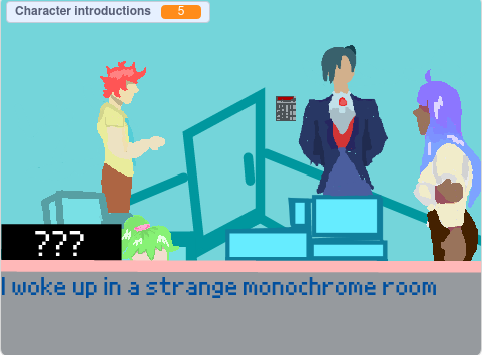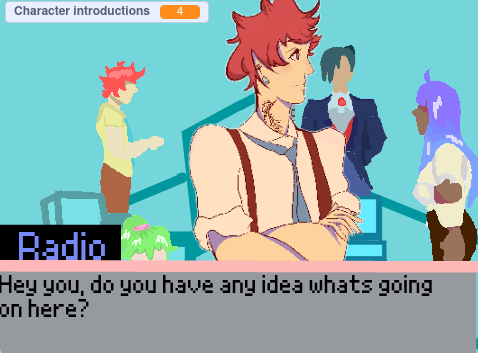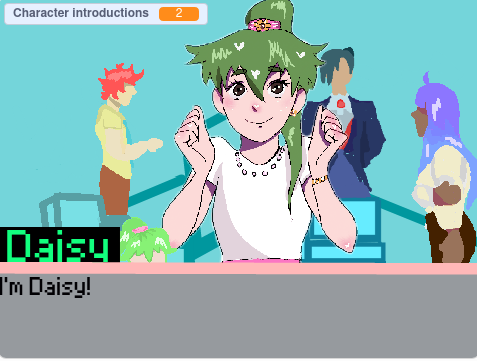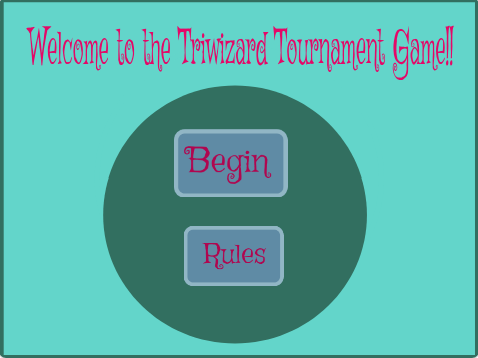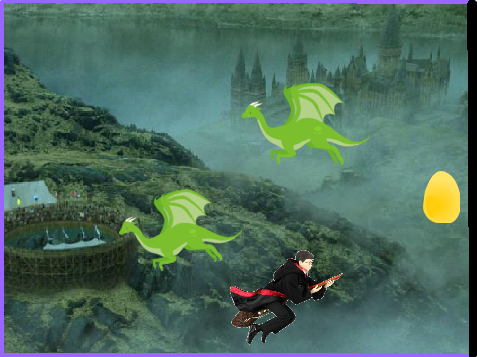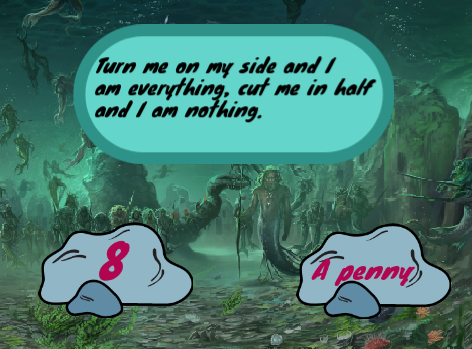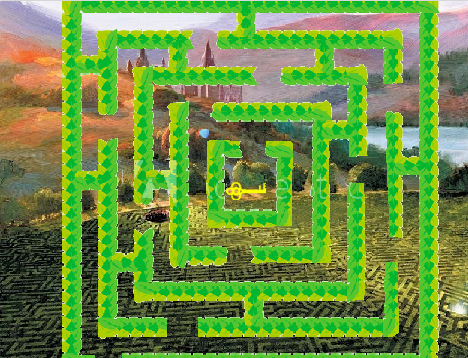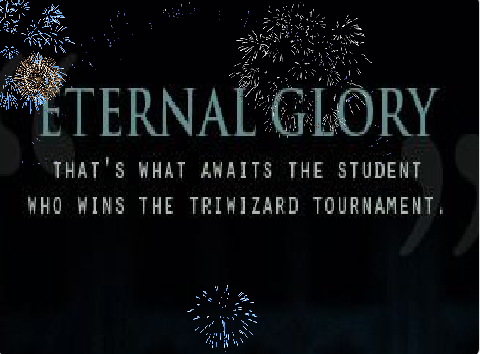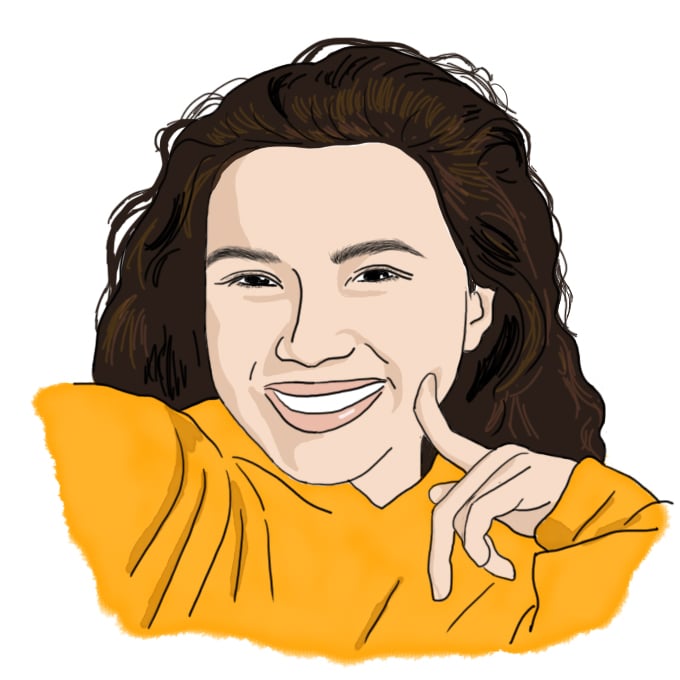
MIT CodeIt by Cami M. '23
or: the best decision i've made this semester
This semester, I joined CodeIt, a student-run organization at MIT where MIT students teach middle school girls and nonbinary students basic programming concepts through Scratch. The last four sessions are spent working on their final projects, which they showcase and present at the end of the program.
The Application Process
I had heard of the program from my friend, Tiffany T. ’22. I didn’t really know much about it and wasn’t all that confident in my coding skills back then, but it was something I remembered.
When the CodeIt application opened up in late August, I immediately applied. I thought I would be somewhat qualified for the job now that I had gotten through some amounts of coding classes and a CS internship.
Meghana K. ’21, the mentor coordinator01 A person on exec in charge of handling beginning of the year pubbing and mentor applications and interviews. this semester, emailed me back with a whenisgood.net form to set up my group interview.
My interview was then scheduled for Monday, 8/31 (The day I moved into my new apartment) and I was as nervous as ever, despite it only being an interview for a student extracurricular, not a full time position or internship.
The Interview
The interview was a group interview about an hour long. I was with two other people who applied, along with two people from CodeIt exec. It was broken down into three main parts:
- Behavioral
- Technical
- Classroom
The behavioral section was full of very typical questions such as “Why do you want to be apart of CodeIt?” and other things. For the technical section, we did Driver-Navigator, where we were paired with the other applicants and one would drive (aka type out the code for the coding question) and the other would navigate (tell the person what to type). The coding questions were easy enough and I thankfully passed. The classroom section was where we were asked hypotheticals like “What do you do if one of the students is talking too much?” and things like that.
Overall, it was a really chill interview and I’m glad I didn’t chicken out.
About two weeks after my interview, I was offered a spot in CodeIt.
Training and Logistics
After acceptance, you have to fill out a Code of Conduct, as well as get a background check done since you’re working with minors. We also had to attend Mentor Training, which was a two hour session where we learned about CodeIt, the format of the program, and how to conduct ourselves in the classroom.
The program was going to be split into three different classrooms — Nano, Mega, and Giga (6th, 7th, 8th) — with 25 students in each classroom and 8 mentors. Each classroom was led by a teacher, a person on Exec who taught the Scratch concepts. There would be two sessions twice a week (Sunday and Wednesday from 2:30 to 3:30 and 7 to 8:30), where the first four weeks were spent learning the basics of Scratch and the last two weeks were dedicated to working on their final project.
Sundays were dedicated to teaching concepts to the kids and they were then later sent into breakout rooms where mentors walked their students through labs to ensure they understood what was just covered.
Wednesdays were more of independent learning, but still in the lab-style format. Mentors just didn’t step in as much during these sessions.
In training we covered potential scenarios we might have to deal with like visible frustration, refusal to communicate, etc. Overall, it was a really enlightening and exciting experience and I learned a lot.
We were then given links to all of the labs for the rest of the semester for Sundays and Wednesdays, enrolled into our Fall 2020 CodeIt Piazza, and assigned our students for the fall. And with their permission, I’m really excited to talk about and brag about my students!!
The Program
The students that gave me permission to talk about them were Emily and Orlaith! They’re two middle schoolers from the Massachusetts area who were so, so sweet.
Orlaith aspires to be a video game developer in the future and often shared with our breakout room her art. She has a love for the Phoenix Wright series and she was an absolute delight to have in class. She was always one of the first to speak up in class, answering my questions whenever I asked and always working so hard on her labs.
Emily was an absolute trooper. Her mom would often teach classes during the time we had CodeIt so she was unable to verbally speak a lot of the time, but despite this setback, Emily was still so on top of things. She would keep up with all the labs, ask questions when she had them, and sometimes, she would even answer her own questions right after she asked them. I had such an admiration for the way Emily tackled and worked through the bugs she encountered with such poise and composure and I was so, so impressed by how she handled CodeIt in general.
I slowly got into the groove of labs by the second or third week, I’d say. I started off by reviewing each lab before the actual session, say 20-30 minutes beforehand. Here, I would keep my eye out for anything that could potentially trip up students and common bugs they could run into. For Sundays, we were usually assigned two labs to go through, where some labs were definitely easier than others.
I’d start off with the easier lab, walking through it. I’d be controlling the screen and dragging the Scratch blocks02 Scratch is a unique programming language in that it isn't text-based. It's blocked based. You can program things by dragging together certain blocks with specific functions and purposes, which is a great visual introduction to coding for beginners. around for them. I’d often ask questions like “Will this work right away or are we missing something?” or “What do you think our next step should be?” I wasn’t afraid to cold call, since they were definitely shy in the beginning, but later they started answering things without the cold call. I made sure to check chat often since Emily was microphone-less and overall ran super smoothly.
For the second or third minilab we would do on Sundays, I took a note out of my interview experience and made my students do driver-navigator. I would give one student the ability to control my screen (via Zoom) and they could drag around blocks, whereas the other students would then direct that person and tell them which blocks to put together in order to accomplish the given task. Each week/minilab I’d switch around the roles. I found this super effective and helped everyone really get engaged with the task at hand.
Wednesdays were a lot more hands-off for me, where the students are assigned longer labs that they’re meant to tackle solo. I would let them run amuck, trying out their labs and doing check-ins with each student every 15, 30, and 45 minutes. This was to ensure that they were making progress and weren’t getting stuck anywhere (not that getting stuck is a bad thing, but I wanted to make sure that I could help them out if they were stuck, just in case they were too shy to say so!) My kiddos definitely weren’t afraid to speak up, though, and would often ask me questions whenever they encountered something they didn’t quite understand. We would finish the labs relatively quickly and we spent a lot of time chatting about other stuff, like being a CS major at MIT or even just college life in general.
I really bonded with my kiddos and I’m really grateful they were my first batch. I don’t have a lot of experience working with younger kids, and to be honest, I was deathly afraid to work with middle schoolers. But, they showed me kindness and respect, which I’m very, very thankful for.
When final projects came around, I was absolutely blown away by their creativity.
Orlaith had come up with a choose-your-own-story dress up game, with unique original characters she had drawn and uploaded herself. Each character was rich and full of their own personality, reflected clearly in their design and palette. It was so obvious that she had put a great amount of thought into each design and her passion for art and games was very clear. I was so, so impressed by the work she put in and the details.
You can check out and play Orlaith’s game here.
Before each student presentation, mentors gave their own introduction to the student as well as awarded them with their own “paper plate.” Normally on campus, these would be actual, physical take home plates for the students to keep an enjoy, but in COVID times, we had to make do with Google slides.
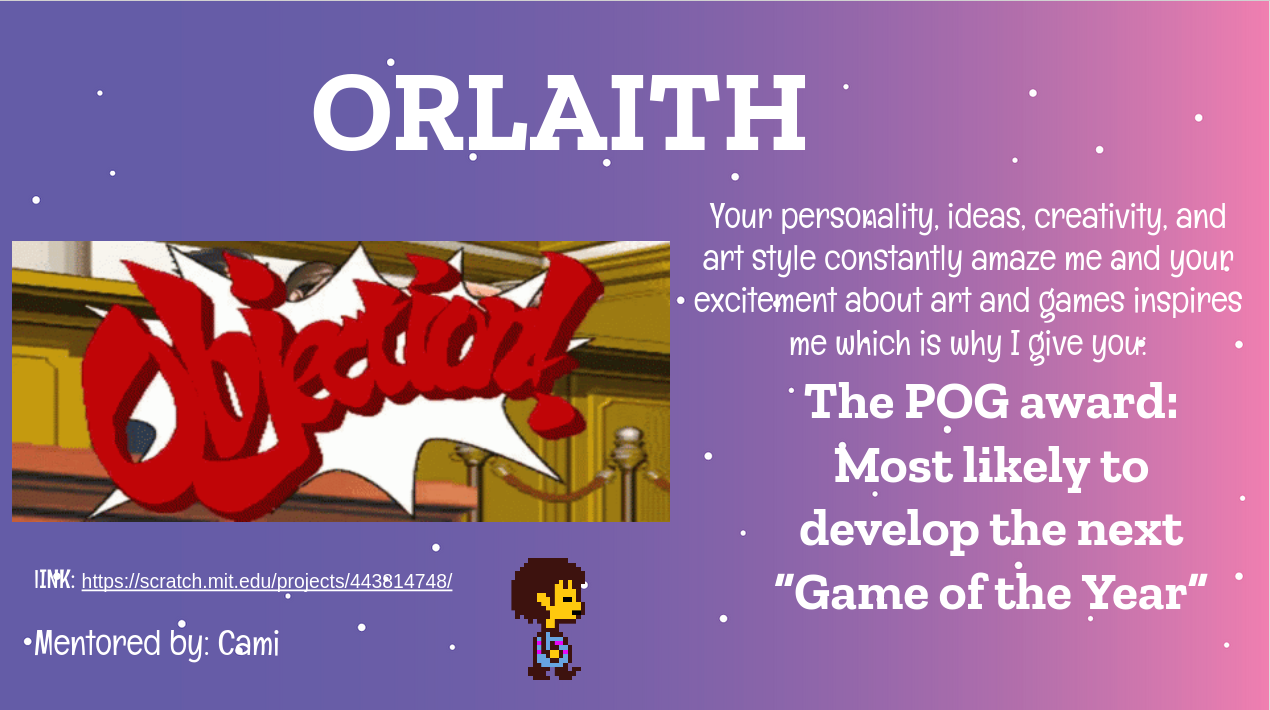
I gave Orlaith the POG award: Most likely to develop the next “Game of the Year.” Firstly, I named it the POG award because I say pog/poggers/PogChamp a LOT and I laughed so hard when Orlaith picked it up and used ‘pog’ once in chat towards the end of CodeIt. It made me feel gross for giving her such a gamer term, but also strangely proud. I then added the GOTY part because of Orlaith’s evident passion and excitement for art, programming, and video games. I can’t wait to see what they do in the future!!!
Emily’s project was so astounding in the fact that it incorporated nearly every single concept we taught over the course of CodeIt. I remember in the very beginning Emily was a little shy and hesitant at first. She would often say things like “I’m really slow, so I’m sorry…” and I remember really trying to encourage her because at the end of the day, speed doesn’t really matter! What matters is understanding the concept. And oh my gosh, did Emily understand the concepts. Over the weeks, Emily quickly grew in confidence in her abilities as a programmer and caught onto new Scratch techniques with ease. She often answered her own questions when she asked, realizing her bug as she asked or seconds after, and I was so, so proud to see that development in her confidence and code-sense. Her project, like Orlaith’s, was ambitious, but she executed it with dexterity and ease. Her project was a three-level Harry Potter themed game.
You can play Emily’s game here.
Her project utilized so many different concepts we learned, like using sensing blocks to detect when Sprites are in contact with other Sprites or colors, broadcasting blocks, and adding music and different backdrops for creativity and depth.
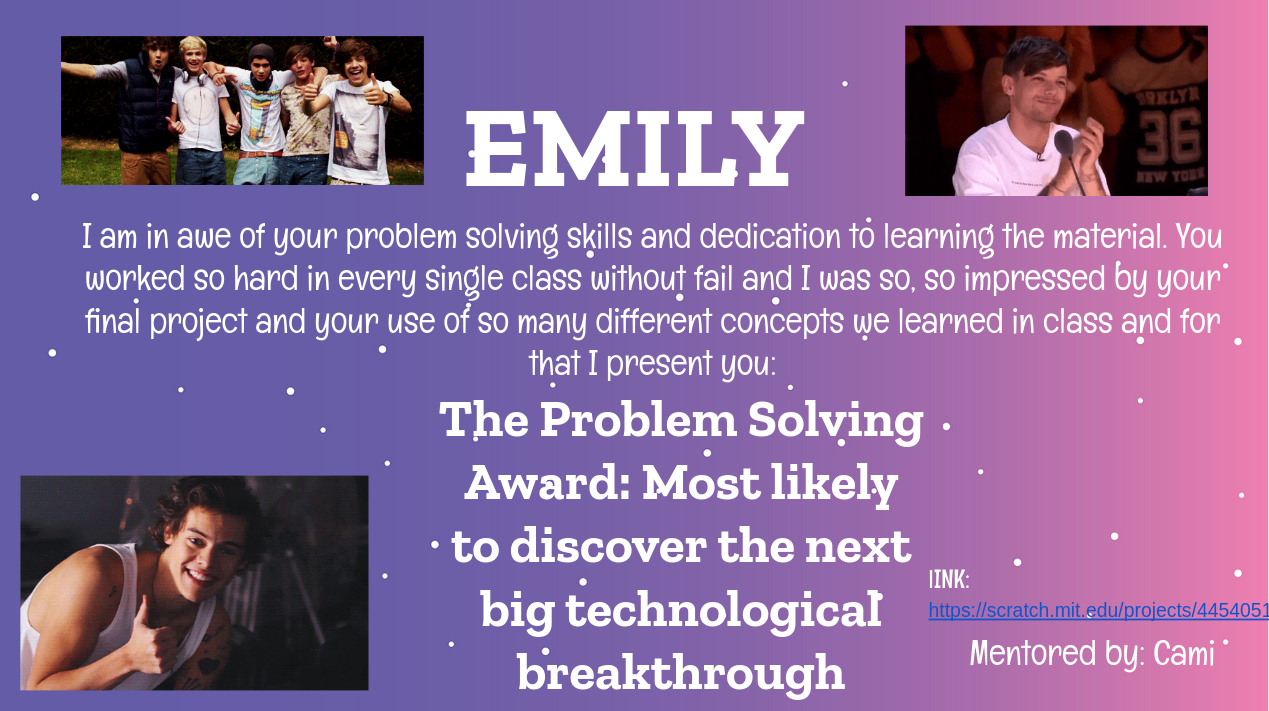
I gave Emily the Problem Solving Award: Most likely to discover the next big technological breakthrough. For reasons I’ve already stated before, Emily was so, so good at rolling with the punches, debugging her code, and going above and beyond in her final project. The One Direction references splattered across the screen are a result of Emily coming into class one day with One Direction lyrics (see: Wolves) as her Zoom background. The strong, Strong Directioner in me screamed in glee, saying “oh my god i love that song”, to which Emily replied, challenging me, “do u know what song it is lol” and I swear I heard God say in that moment “This is your time, Camille,” and I knew I memorized One Direction’s entire discography solely for this moment, as I said: “Wolves by One Direction.” Thank you, past Cami. Your knowledge of One Direction earned the respect of an eighth grader, and that’s all we really want in life.
Conclusion
CodeIt was…the best decision I’ve made this entire semester. Nevermind me moving in with my boyfriend and roommates or buying Hades, this was the peak of my semester. I had such a great time in CodeIt, bonding with my kiddos and winning Kahoot and watching their confidence bloom across the seven weeks. Prior to CodeIt, I never believed I could teach or mentor. I’m typically pretty impatient and bad at explaining things and I get really nervous as to whether or not I’m qualified to teach. But after, strangely, I have a new confidence in myself, which I didn’t really expect. CodeIt, in a way, proved that I am capable to do all these things and be the mentor-type that I never thought I could be. I also became really attached to my kiddos. I was really, really nervous they wouldn’t like me or think I was cool or listen to what I had to say at all, but they ended up being not only the sweetest people ever, but full of unique and playful personalities alongside a healthy dose of passion and excitement for coding. It made me so excited to hear about their aspirations, all the things they hoped to do with coding. They planned on learning Python eventually, and building their own video games, and maybe building their own websites. And I was so, so excited for them. I think, a lot of the times, I get caught up in the MIT Bubble, where I measure success by tangible achievements and I forget the whole point of my being here. To learn. To be excited about what I’m learning. And as a cheesy as it is, my sessions at CodeIt resparked my passion and excitement about CS. Seeing my kids bursting with ideas for their final project, practically buzzing at the endless possibilities that Scratch offered, reminded me why I’m studying CS in the first place: because it’s SO. FREAKING. COOL.
I’m grateful I did this program. Through it, I got to learn so much about myself and get back in touch with my roots and I…just had the best, best time. I even gathered the courage to apply for an Exec position so I can do a little more where I can. Anyway, TLDR, CodeIt was great. Check it out. Join if you can. And shoutout to Orlaith and Emily for being the best kiddos ever.
- A person on exec in charge of handling beginning of the year pubbing and mentor applications and interviews. back to text ↑
- Scratch is a unique programming language in that it isn't text-based. It's blocked based. You can program things by dragging together certain blocks with specific functions and purposes, which is a great visual introduction to coding for beginners. back to text ↑

